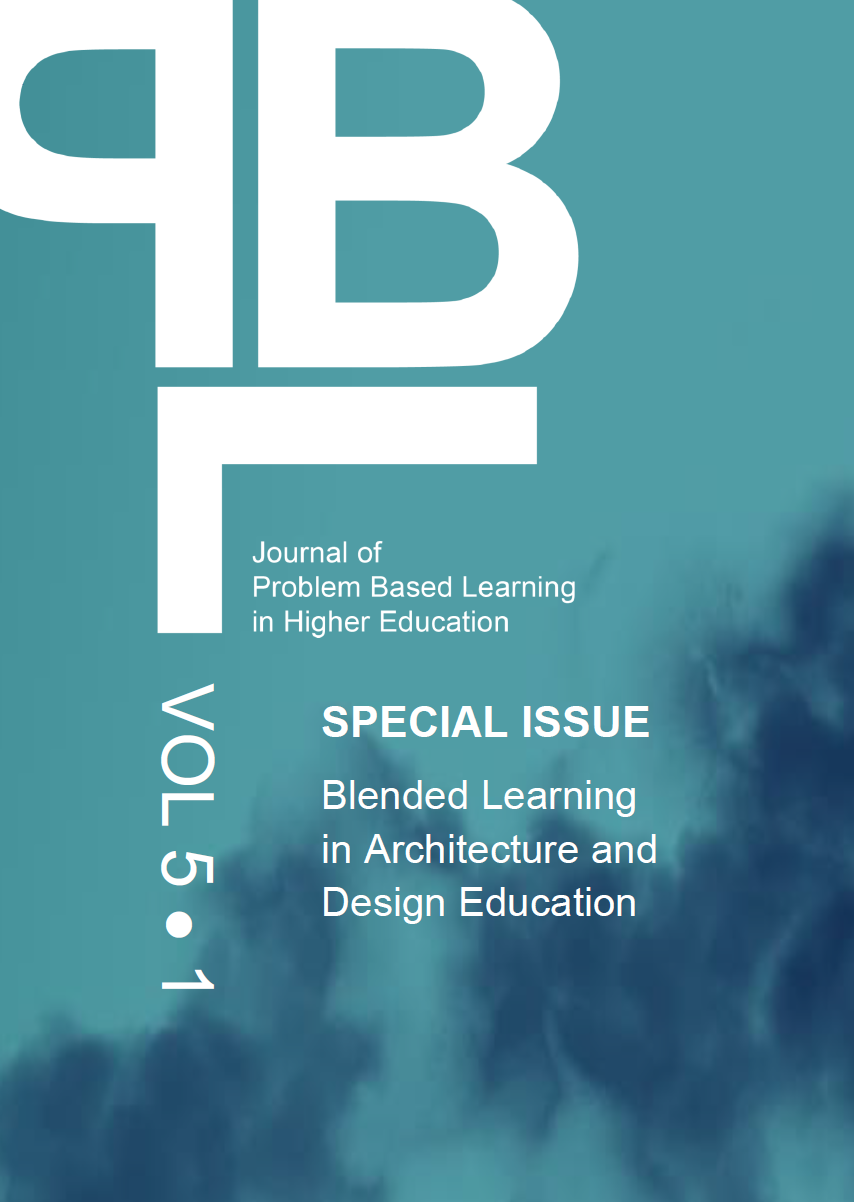Abstract
At the University of Canberra, Australia, the design and architecture faculty are trialling a range of approaches to incorporating learning technologies in the first year foundation studio to improve student learning outcomes. For this study researchers collected information on students’ access to their assignment information and feedback from the learning management system (LMS) to discover how the students engaged in the design process.
The studio curriculum was designed to encourage students to engage in a convergence, divergence dynamic (Brown, 2009; Thomas, Billsberry, Ambrosini, & Barton, 2014) in developing their own understanding of the design process. The staff tailored around points of convergence, online instruction, assessment tools and feedback in studio. We argue that using learning technologies in this way can improve intentionality at the beginning of semester, enhance students understanding of feedback and facilitate a more iterative approach to problem based learning in studio practice.
References
Bonk, C., J. (2009). The world is open: How web technology is revolutionizing education. San Francisco, CA: Jossey-Bass.
Bower, M., Howe, C., McCredie, N., Robinson, A., & Grover, D. (2014). Augmented Reality in education – cases, places and potentials. Educational Media International, 51(1), 1-15. doi:10.1080/09523987.2014.889400
Brown, T. (2009). Change by design. UK: Harper Collins
Buchanan, R. (1992). Wicked Problems in Design Thinking. Design Issues, 8(2), 5-21.
Danielson, J., Preast, V., Bender, H., & Hassall, L. (2014). Is the effectiveness of lecture capture related to teaching approach or content type? Computers & Education, 72(0), 121-131. doi:http://dx.doi.org/10.1016/j.compedu.2013.10.016
Dong, A. (2015). Design × innovation: perspective or evidence-based practices†. International Journal of Design Creativity and Innovation, 3(3-4), 148-163. doi:10.1080/21650349.2014.943294
Funda, D. (2011). HarmanlanmıĢ (Karma) Öğrenme Ortamları ve Tasarımına ĠliĢkin Öneriler. Blended Learning Environments and Suggesstions for Blended Learning Design., 12(2), 73-97.
Hyo-Jeong, S., & Bonk, C. J. (2010). Examining the Roles of Blended Learning Approaches in Computer- Supported Collaborative Learning (CSCL) Environments: A Delphi Study. Journal of Educational Technology & Society, 13(3), 189-200.
Jorgensen, M., & Phillips, L. J. (2002). Discourse analysis as theory and method. London: Sage Publications.
Kay, R. H. (2012). Exploring the use of video podcasts in education: A comprehensive review of the literature. Computers in Human Behavior, 28, 820-831.
Kimbell, L. (2011). Rethinking Design Thinking: Part I. Design and Culture, 3(3), 285-306. doi:10.2752/175470811X13071166525216
Kimbell, L. (2012). Rethinking Design Thinking: Part II. Design and Culture, 4(2), 129-148. doi:10.2752/175470812X13281948975413
Laurillard, D. (2013). Rethinking University Teaching: A Conversational Framework for the Effective Use of Learning Technologies: Taylor & Francis.
MacKenzie, A., & Hocking, V. (2014). The ‘place’ of the studio in contemporary higher education. Fusion Journal(3), 1-3.
Moore, K. (2005). Visual thinking: hidden truth or hidden agenda? Journal of Visual Art Practice, 4(2-3), 177-195. doi:10.1386/jvap.4.2and3.177/1
Norton, A., & Cherastidtham, I. (2014). Mapping Australian higher education, 2014-15. Retrieved from Melbourne, Victoria:
Pektaş, Ş. T., & Gürel, M. Ö. (2014). Blended learning in design education: An analysis of students' experiences within the disciplinary differences framework. Australasian Journal of Educational Technology, 30(1), 31-44.
Rittel, H., & Webber, M. (1973). Dilemmas in a General Theory of Planning. Policy Sciences, 4, 155-169.
Schön, D. A. (1983). The reflective practitioner - how professionals think in action.: Basic Books.
Thomas, L., Billsberry, J., Ambrosini, V., & Barton, H. (2014). Convergence and Divergence Dynamics in British and French Business Schools: How Will the Pressure for Accreditation Influence these Dynamics? British Journal of Management, 25(2), 305-319. doi:10.1111/1467-8551.12007
Tonkinwise, C. (2014). Design Studies—What Is it Good For? Design and Culture, 6(1), 5-43. doi:10.2752/175470814X13823675225036
Wiese, C., & Newton, G. (2013). Use of Lecture Capture in Undergraduate Biological Science Education. The Canadian Journal for the Scholarship of Teaching and Learning and Individual Differences, 4(2), Article 4.
Wrigley, C., & Straker, K. (2015). Design Thinking pedagogy: the Educational Design Ladder. Innovations in Education and Teaching International, 1-12. doi:10.1080/14703297.2015.1108214
Articles published in Journal of Problem Based Learning in Higher Education are following the license Creative Commons Attribution 4.0 (CC-BY)
Authors retain copyright and grant the journal right of first publication with the work simultaneously licensed under a Creative Commons Attribution 4.0 International License (CC-BY). Further information about Creative Commons
